Peak Rail was formed with the aim of reconnecting Buxton to Matlock by rail following the controversial closure of the Midland line linking them. While a northern push towards Bakewell remains a clear aspiration, the heritage line is a flourishing base of several different heritage groups, reports John Titlow in words and pictures.
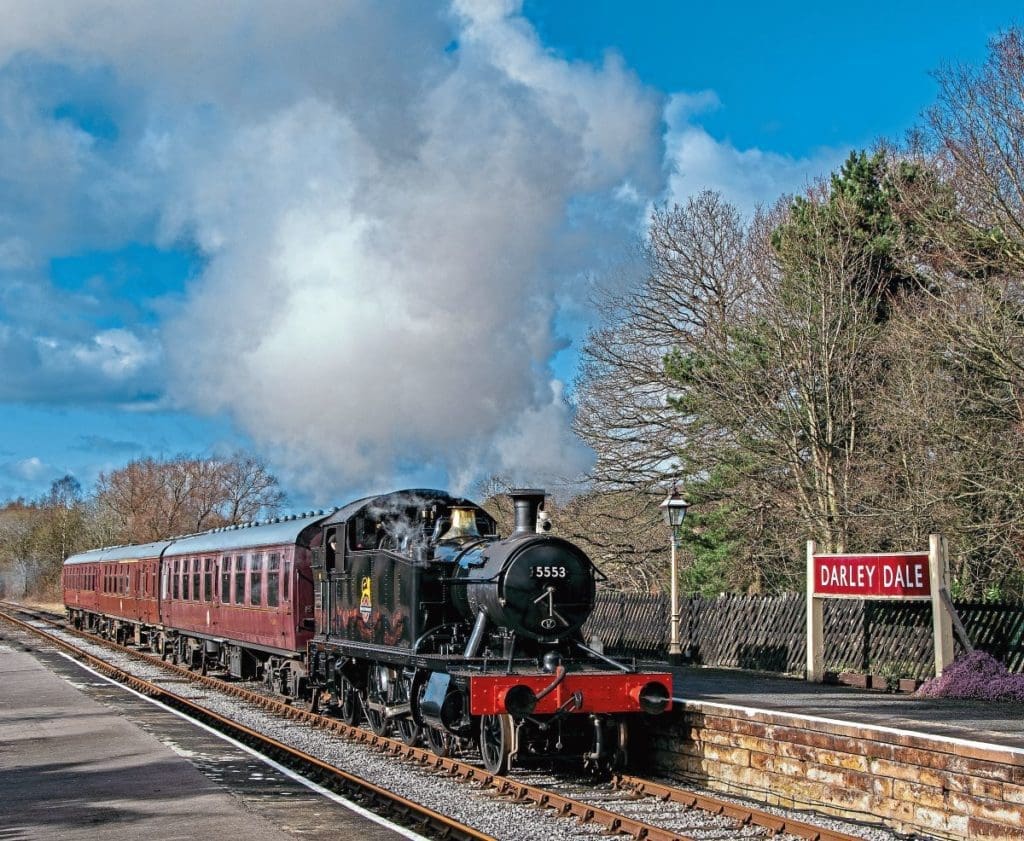
When entering Peak Rail’s station at Rowsley South, the first thing that strikes you is the amount of space. A signalbox greets you at the entrance and the vast array of lines expand into a mass of sidings. To the right, they disappear past woods that have grown up since it was a real working steam shed.
In BR days this area was a large shed with considerable sidings shunted by the smaller locomotives, while the larger ones were used on freight and passenger services and as bankers on the 1-in-100 climb over Monsal Dale, now a renowned cycle track.
Enjoy more Heritage Railway reading in the four-weekly magazine.
Click here to subscribe & save.
Rowsley motive power department (16J) was closed in 1964. In its later years it was home to a variety of locomotives including Midland 4F 0-6-0s, Fairburn 4MT 2-6-4Ts, Stanier 4MT 2-6-4Ts, BR Standard 5MT 4-6-0s, Stanier 8F 2-8-0s, J94 0-6-0STs, Jinty 3F 0-6-0Ts, BR Standard 9F 2-10-0s and eventually diesels.
Rowsley South is the starting point where Peak Rail operates trains to Matlock on a section of the original Midland Main Line that ran from St. Pancras via Leicester, Derby Midland, and over Monsal Dale to Manchester Piccadilly. Just south of Matlock lies Ambergate Junction, where the Midland continued north to Sheffield and Leeds and then over the legendary Settle route to Carlisle.

History
Railways in this area have a complex history because they were built by several companies over 20 years, and not all by the Midland.
Derby to Ambergate was the first section to open in 1840 as part of the North Midland Railway.
Ambergate to Rowsley followed, opening in 1849 and built by the Manchester, Buxton, Matlock & Midland Junction Railway (MBM & MJR). It was operated by the Midland and absorbed in 1871.
Manchester to Rowsley opened in sections. Construction began in 1860 from Rowsley to Buxton, and the line was fully open by 1866. The first Rowsley station still exists around a mile north from Peak Rail’s Rowsley South. It was built by the MBM & MJR in 1849 at the end of what became a terminus after realignment. In 1862 it became part of the goods yard and finished its railway days as a goods office in 1967. Now it is part of a shopping centre.
A second Rowsley station was built 1862 serving the diverted line. It closed in 1967 and afterwards the platforms were infilled, with the station building demolished in the 1980s. A car park now occupies the site.
The next section north towards Peak Forest caused considerable problems in construction due to the terrain, necessitating several tunnels and viaducts to be built.
It opened between Blackwell Mill and New Mills in 1866 for goods and in 1867 for passengers. Access into Manchester was gained by running power over the Manchester Sheffield & Lincolnshire Railway. It was not just the terrain that made construction of the line difficult, for two local Dukes opposed its building. Typical of the time, the landed gentry had considerable power and the Duke of Devonshire opposed the railway running through Chatsworth Park so another route was chosen, though the duke still made use of the railway using Hassop station!
Haddon Hall, north of Rowsley station, was the ancestral home of the Duke of Rutland, who also opposed the railway crossing the surface of his estate. Accordingly an expensive tunnel had to be built when a 12ft-deep cutting would have sufficed to preserve his view. The duke did not want to see smoke rising above his estate but conveniently used Bakewell station, even having his coat of arms built into its stonework.
Running through the Derbyshire Peak District, the route was one of the most scenic in the UK, used by named fast expresses like ‘The Palantine’, ‘Peak Express’, and of course the ‘Midland Pullman.’ Motive power in the later years included LMS Jubilees, Patriots, and occasionally Royal Scots.
Track was lifted quickly when the last direct St. Pancras to Manchester express was diverted away from the Peak Line in 1968. Matlock to Buxton was closed by the Labour Minister for Transport Barbara Castle and not by the Beeching cuts empowered by the previous government.
Preservation
Peak Rail started in 1975 simultaneously on two sites, one at Buxton and the other at Matlock, by occupying the small and large goods sheds at the stations. The Buxton Midland site was purchased in 1981 and transformed from dereliction into a steam centre, with trains running along a short line built by volunteers. The Buxton site closed in 1989 due to insufficient funds available to extend further and some land was sold to a spring water company.
Peak Rail still has a presence in the town, capable of accommodating a station, and some trackbed is still in its ownership, including the water crane and platform.
Peak Rail had a busy year in 1988 when operations were transferred to Matlock, funded by a share issue. Peak Rail Ltd. converted into a PLC and funds raised were invested in rebuilding the line between Darley Dale to Matlock Riverside, which opened in 1992.
A second share issue raised the funds to cover extending the line to Rowsley South in 1997, allowing the redevelopment of the former Rowsley engine shed site.
Today’s route
The running line starts at Rowsley South station and follows the River Derwent to Matlock, a distance of just under four miles. Some of it runs alongside a flood plain; there was a major flood in 2019 which inundated the trackbed for some distance north of Matlock and caused £100,000 of damage to Bridge 35.
Rowsley’s first locomotive shed dates back to 1849, built by the MBM & MJR. It was single track with three additional stabling roads and located just south of the station. Nearby sidings opened in 1877. A four-road shed was built in 1879 due to the expansion of the sidings. A new engine shed was built about one mile south of the original and opened in 1926, before finally being demolished in 1964. This site was levelled, but the ash and turntable pits survived, though were full of rubble and needed clearing out. The present engine shed is on the precise location of the original, but is shorter in length.
The 60ft turntable came from Mold Junction, where it was installed in 1937 under a shed modernisation plan by William Stanier CME, of the LMS. Peak Rail volunteers rescued it in 1987, storing it at Buxton before clearing out the pit and restoring it to operational duties in 2010. For their efforts they received the Heritage Railway Association Volunteers’ Award in 2010.
Rowsley South is the centre of Peak Rail’s main restoration and maintenance sheds, storage sidings, and the modern-day Ashover Light Railway’s base. Several sheds have been built over time and there is plenty of space for expansion. Yet again, Rowsley continues to play an important role for railways.
Built alongside the ex-LMS locomotive depot, Rowsley South station is around one mile to the south of the Midland’s Rowsley station. It was built by Peak Rail and opened in 1997. Working lampposts have recently been installed. There is substantial car parking, a buffet, gift shop, and a picnic area.
The signalbox at the entrance came from Bamford on the Hope Valley line, installed in 2018. It is open to the public and gives demonstrations on how the signalling system works.
One lever is set aside for public use, operating a nearby ground signal for people to see. The system used is a turnover frame continuous two-wire arrangement rather than a single wire or rods; this makes the levers easier to move over longer distances, enabling shorter levers. The frame was bequeathed by the National Railway Museum, which would rather see it working rather than buried in a museum.
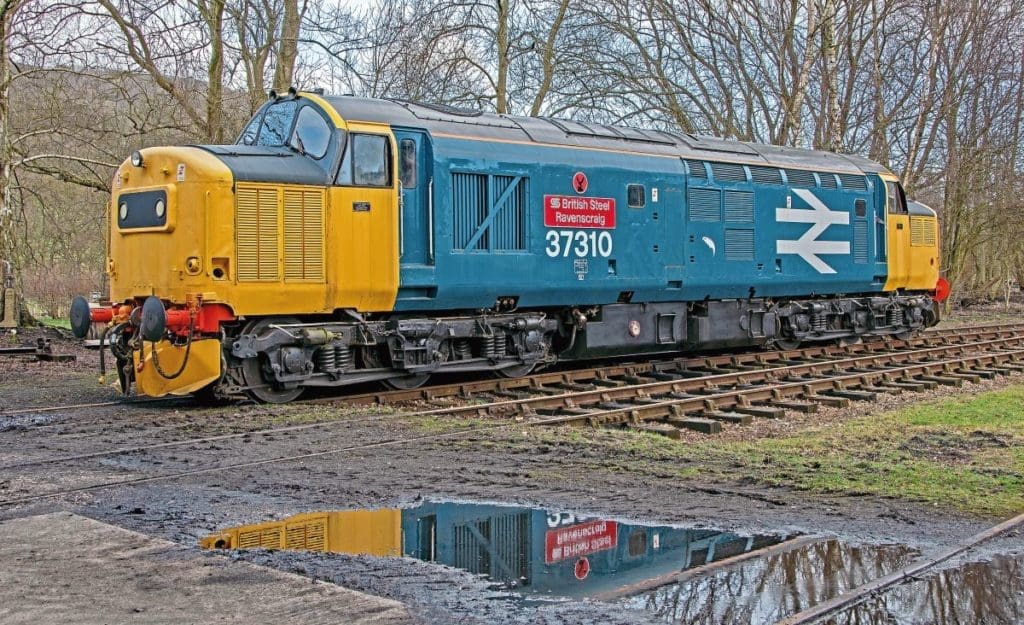
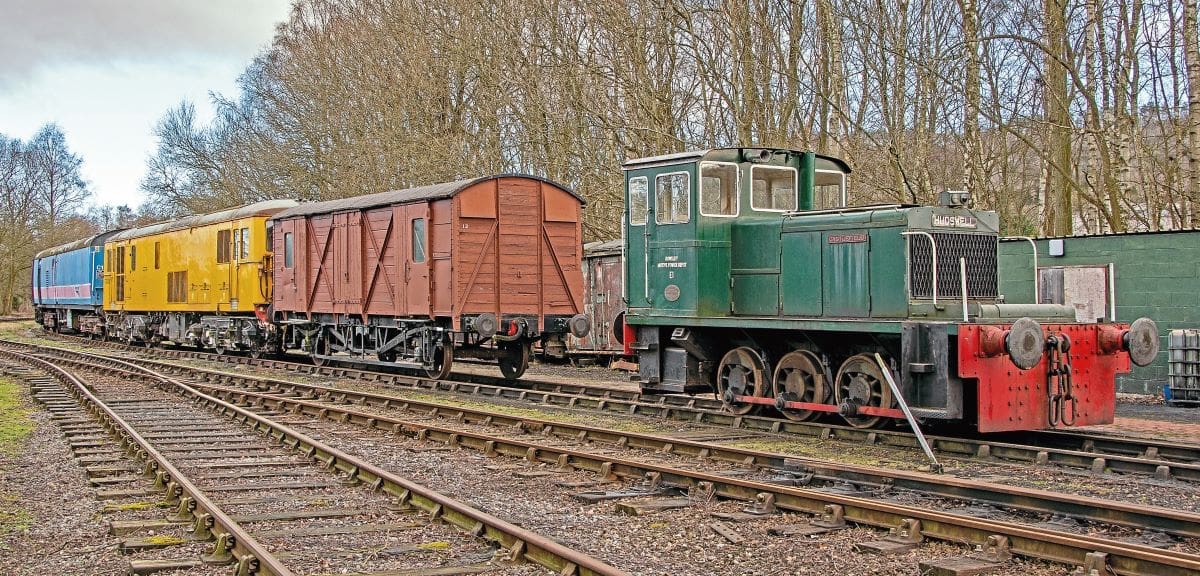
Heading south, the next station is Darley Dale, formerly called Darley. Opened in 1849, the station still gives an impression of the old Midland main line due to the length of double track running through it. Two original station buildings exist here: on the Up side Peak Rail occupies one, while on the Down the building is council-owned and derelict. Peak Rail is attempting to lease it.
Signalboxes resplendent in Midland colours operate and protect the two nearby level crossings. When a two-train service is operating, trains pass here. Immediately south of the station are sidings used for storing mainly industrial diesel locomotives.
Matlock Riverside was initially Peak Rail’s southern terminus, where it is possible to run round a seven-coach train. It is used when the line is operated by single locomotives, a signalbox controlling the loop.
Matlock station was eventually reached in 2011, giving the line a town centre station with a cross platform link to the national network and a main line connection that has been used for steam specials. Network Rail uses the Up platform and Peak Rail the Down. There is no facility for trains to run round here, so services are normally top-and-tailed. Peak Rail has a lease on the station buildings.
This final section was made possible by the building of a supermarket on the site of Cawdor quarry, which was rail connected. Planning would not have gone ahead as the road access was previously too narrow.
A new bypass bridge had to be built over the River Derwent and the track realigned. The old goods shed was demolished, with the stone and track donated to Peak Rail.
A multi-user trail follows the line to Rowsley. Some of the once extensive sidings have now been returned to nature.

A welcome home for all
Peak Rail hosts several groups, with the majority based at Rowsley South. A newly constructed loco shed was built at Rowsley in 2010.
The Waterman Railway Heritage Trust reached an agreement in 2015 with Peak Rail to base Pete Waterman’s railway assets at Rowsley South. Its aims are ‘the preservation of historic railway engines, carriages and ancillary items, education of the general public as to the historical significance of preserved railways through the promotion of actual rolling stock and scale models.’ It is funded by the sale of around one-tenth of Pete Waterman’s model railway in 2015, raising more than £600,000, securing the future of The Waterman Railway Heritage Trust.
Inside the shed is 1924-built GWR 5205 class 2-8-0T No. 5224 under restoration and fully stripped to the frames. Its wheels have been re-profiled and frames painted.
There is also 1944-built Robert Stephenson & Hawthorns J94-type 0-6-0ST No. WD150 under overhaul, and Hawthorn Leslie 0-6-0ST No. 3138 of 1915 Holwell No. 14 being slowly restored in the corner of the shed.
Giving sterling service over the last year has been RSH 0-4-0ST No. 7063 of 1942 Eustace Forth, regularly pulling 350 tons. It is currently on jacks while the wheels go for turning.
Recently restored to working condition is 2-6-2T small prairie No. 5553. Built at Swindon in 1928, it was the last locomotive to depart Barry scrapyard in 1990 and was used in Peak Rail’s last Santa season and on a recent charter.

Bought by Pete in 1988 is operational Sulzer Class 25 D7659, which will be heading for the North Norfolk Railway’s June 10-12 mixed traction weekend.
Outside the shed is Class 37 No. 37310 British Steel Ravenscraig needing minor work, ex-Manchester Ship Canal Hudswell Clarke 0-6-0 diesel shunter E1 built in 1960, and yellow-liveried BR class 73 electro diesel 73138 from 1966.
The North Notts Locomotive Group owns BR Class 44 D8 Penyghent. Built in Derby in 1960, it is one of the two surviving Peaks and is Peak Rail’s mainstay diesel, currently in BR green livery. It is stored inside the main shed.
The Heritage Shunters Trust started in the 1970s and moved into a new shed next to the main one in 2002. It originally began in a siding at Meadowhall, known as the South Yorkshire Railway. The new shed was funded by the membership, donations, and a grant from the Heritage Lottery Fund.
Over the years it has built up an impressive collection and operates at least twice a year on its gala days, giving brake van rides from a small platform on the Heritage Shunters Trust’s running line. More details can be found at www.heritageshunterstrust.com
The LMS Carriage Association’s (www.lmsca.org.uk) aim is to preserve and operate a representative collection of historical LMS passenger and non-passenger coaching stock for use by the railway. It has acquired several carriages and most of its restoration activities are based at Rowsley South.
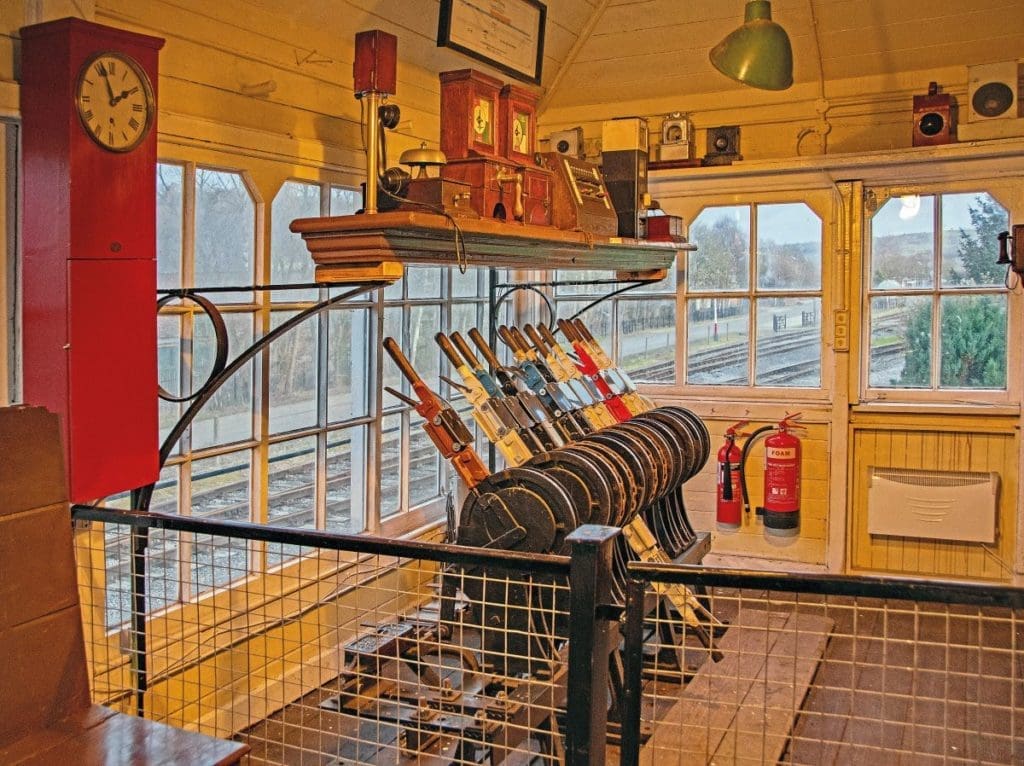

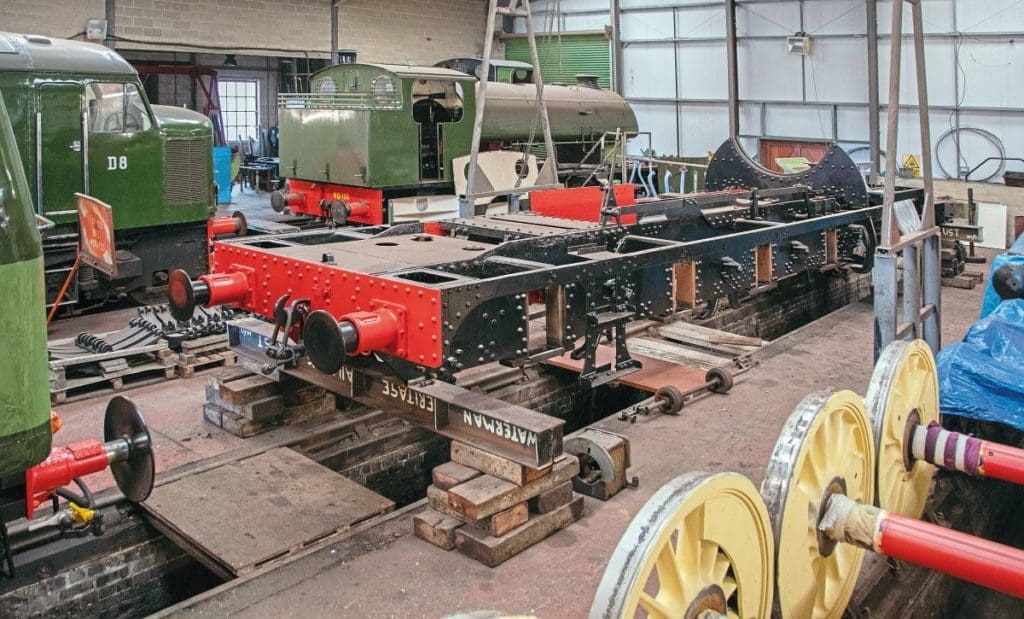

On loan from the National Railway Museum since 2003 is LMS carriage Vestibule Third No. 7828, built at Derby in 1925. It is now fully restored by LMSCA volunteers and forms part of the Palatine dining set run on the line.
The Renown Repulse Restoration Group (www.renownrepulse.com) was formed in 2002 over an internet forum. It aims to restore, exhibit, and operate BR Class 50s Nos. 50029 Renown and 50030 Repulse, neither of which went into a scrapyard and were considered worth saving. No. 50030 was substantially complete with only a few missing parts. No. 50029 was less so, although it had all major components present. The Rowsley South site is the base for the group’s restoration project.
Andrew Briddon Locomotives is an extraordinary private collection of industrial diesel shunters based just south of the station at Darley Dale; some are spotted when departing the station.
A new two-road shed called the Geoffrey Briddon Building, named after Andrew’s grandfather, houses some of the collection. Further details are available online at www.andrewbriddonlocos.co.uk
The Ashover Light Railway Society is based at Rowsley South, just 5.5 miles from the original 2ft gauge line. Ashover was the terminus of this 2ft railway and built on the cheap using second-hand materials by the Clay Cross Company for transporting minerals. Its Baldwin 4-6-0Ts came from the War Stores Disposals Board.



Colonel Holman F Stephens, the ‘King of the Light Railways’, engineered the line and construction started in 1922. It opened to freight in 1924 and to passengers a year later.
Excursion trains took workers out into the countryside and to the Where the Rainbow Ends café that was built to serve refreshments and hold dinner dances and other social events. The 1926 building still exists, stored on site, and the society hopes to re-erect it.
The line closed in 1950 with the majority of it, being worn out, scrapped. Hopes of ever restoring it were dashed by the flooding of the Amber Valley where the line ran.
The society wants to keep alive the memory of the railway and was delighted to be given the opportunity by Peak Rail to create an Ashover tribute line on its site.
Over the last six years it has built a new two-road workshop and a 350-yard running line, laid sidings, and restored several locomotives (including two unique ones) and wagons.
Its running line is ready to be Independently Safety Verified to allow passenger running. Later this spring, the society aims to offer limited rides on its battery electric locomotive and by summer to have adapted a wagon for passenger use, hauled by its Ruston diesel.
Discussions are ongoing with Peak Rail as to how far the railway will go. Nearby is a picnic and play area which could accommodate a turning triangle, station shelter and the Rainbow Ends café, reproducing a scene similar to Ashover Butts Pastures on the original line. For more information, visit www.alrs.org.uk
The Derwent & Wye Valley Railway Trust (www.dwvrt.co.uk) is not based at Rowsley South.
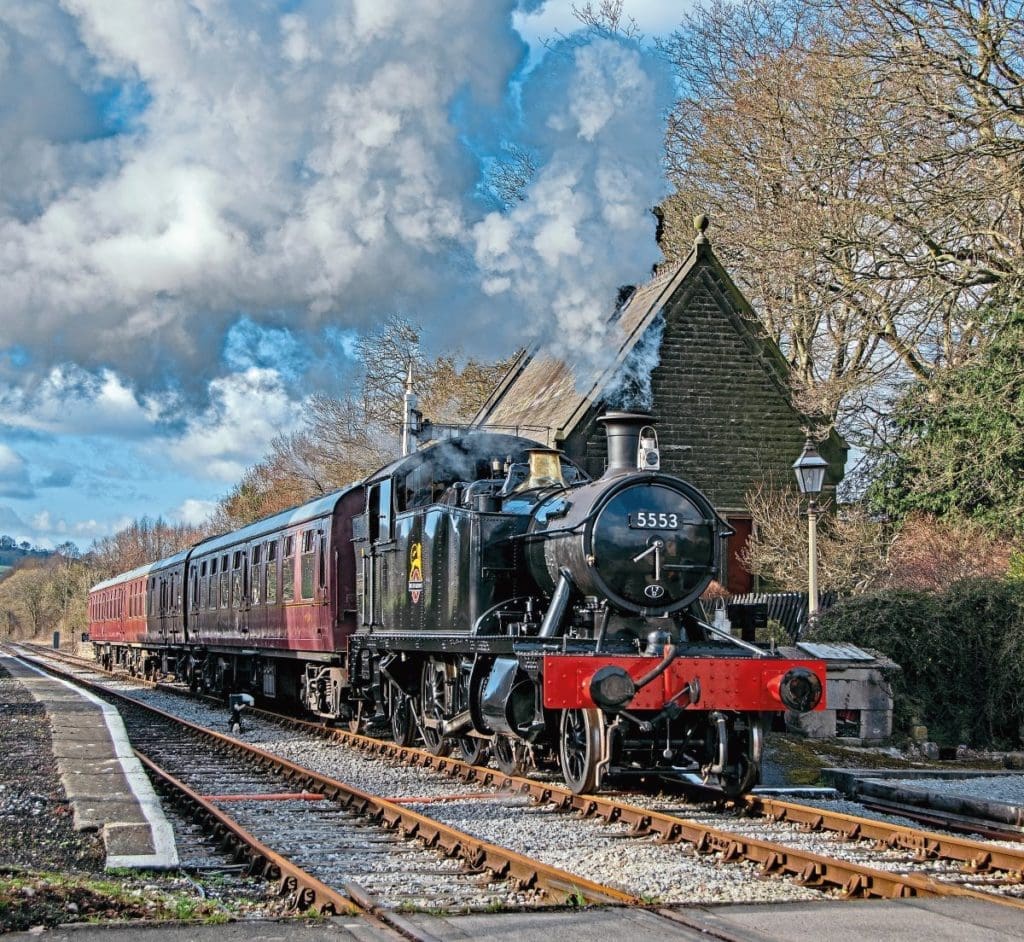
It supports local railway heritage largely through fundraising for specific development projects associated with the railway between Buxton and Ambergate. It assisted in the installation of the signalbox at Matlock Riverside.
At Darley Dale, it is involved in recreating a late LMS station and developing proposals for the restoration and reinstatement of the original cast iron Midland Railway footbridge at Darley Dale, for which new columns have been recast. Other ambitious projects include the restoration of a first class Mk.1 open coach (www.dwvrt.co.uk).
To Bakewell and beyond?
■ Phase 1: Realistic plans are afoot for the extension of the present running line north to the site of the second Rowsley station in the village. A 99-year lease is about to be signed with the council on the currently disused trackbed to the A6 road. Rowsley station will have to be rebuilt.
■ Phase 2: From Rowsley, matters start to get difficult because the biggest obstacle immediately north is the missing A6 road bridge. If the Great Central can do it, so can Peak Rail. Rowsley viaduct over the River Derwent will need restoring, along with the trackbed. A halt could be built at Haddon, benefiting the hall and railway combined (provided the duke does not object!)
■ Phase 3: Restoring Haddon Tunnel and Coombes Road viaduct to their former uses, then relaying track into the station site and restoring that to its former use. As with any extension, it depends on the necessary finance being raised – but how about a share issue to get this railway into Bakewell, tantalisingly close to Monsal Dale? However, the ambition to complete the reopening of the railway through the Peak District National Park to Buxton remains alive.
Not to be held back, Peak Rail is currently in discussions with various commercial interests, together with the relevant national and local authorities, about the possibilities of reopening the Matlock-Buxton line as a freight diversionary route.
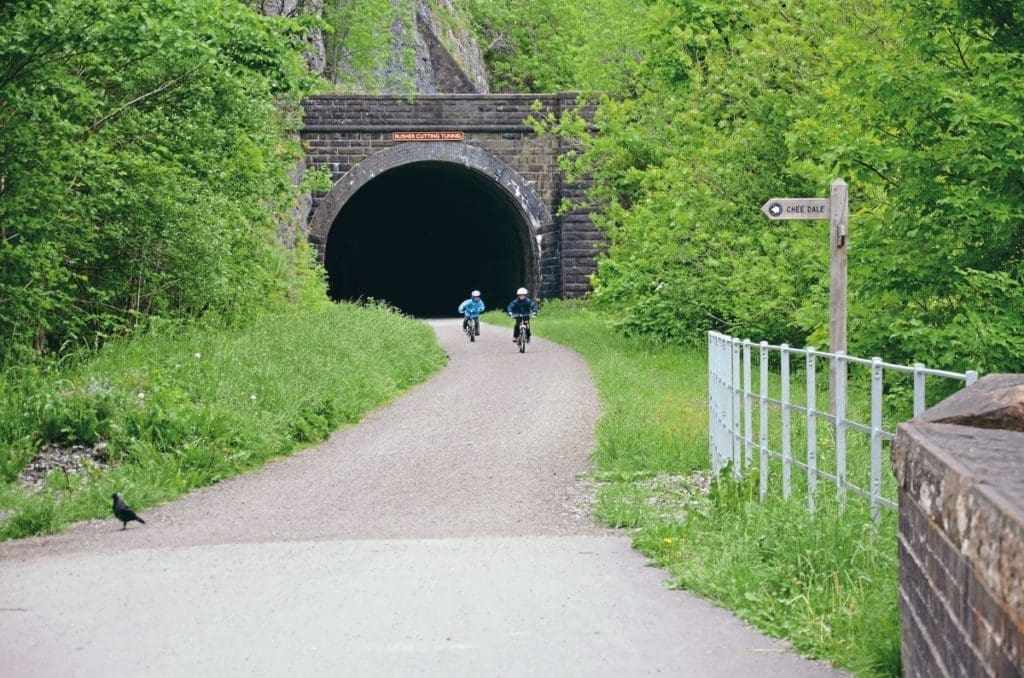
The reopening of railways after they have become a cycle track is notoriously difficult; Sustrans is extremely protective about its cycle tracks returning to railway use, yet perhaps this may change a little now, especially with the recent rise in fuel costs.
Derbyshire County Council and the Peak Planning Board supported the development of the Monsal Trail from Bakewell to Blackwell Mill as a cycle track. There is a stated aim to extend to Rowsley as part of the White Peak Loop Trail, but there is no mention in the plan of the proposed railway extension beyond Rowsley village toward Bakewell.
The line’s history and the prospect of travel through magnificent scenery on a railway linking some of Derbyshire’s principal tourist centres ensures that the desire to fully reopen the railway will never diminish.
The season ahead
To help with steam services in the short term, Bagnall 0-4-0ST No. 2648 of 1941 Dunlop No.6 arrived from the Chasewater Railway on March 17. Class 47 D1501, which dates from 1962 and is part of the Waterman Trust collection, will arrive in April and be permanently based there, leaving the East Lancashire Railway after about 29 years.
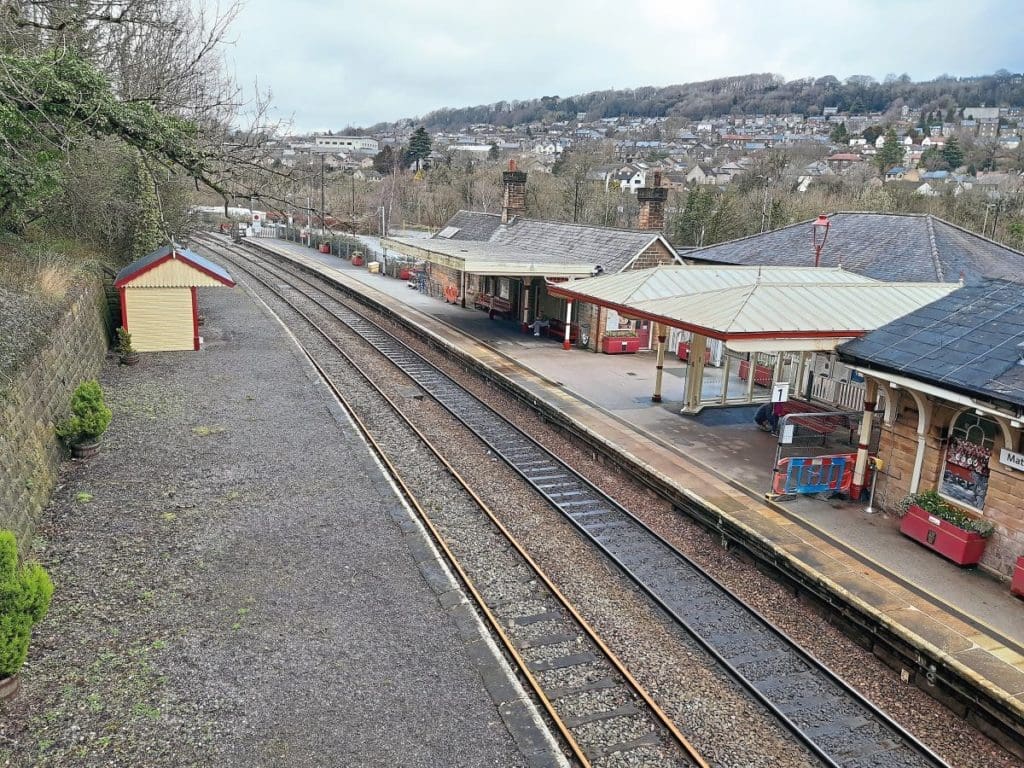
Peak Rail began its weekend services on April 2, running at weekends until May 1. Plans are initially to run diesel on Saturdays and steam on Sundays, both running to Matlock Riverside to enable running round. Coal and diesel fuel costs have both risen sharply in recent weeks and this arrangement will save on fuel costs.
Peak Rail will also be running normal services over Easter, and a Race the Train event will be held on Easter Monday. A full timetable, to operate from May onwards, will be published online soon at www.peakrail.co.uk
Much is going on at this railway. It has the space for additional workshops and sidings at Rowsley and needs only a serious injection of money to move forward.
Should it ever get into Monsal Dale, Peak Rail could become one of the UK’s premier heritage lines.

Advert
 Enjoy more Heritage Railway reading in the four-weekly magazine. Click here to subscribe.
Enjoy more Heritage Railway reading in the four-weekly magazine. Click here to subscribe.




